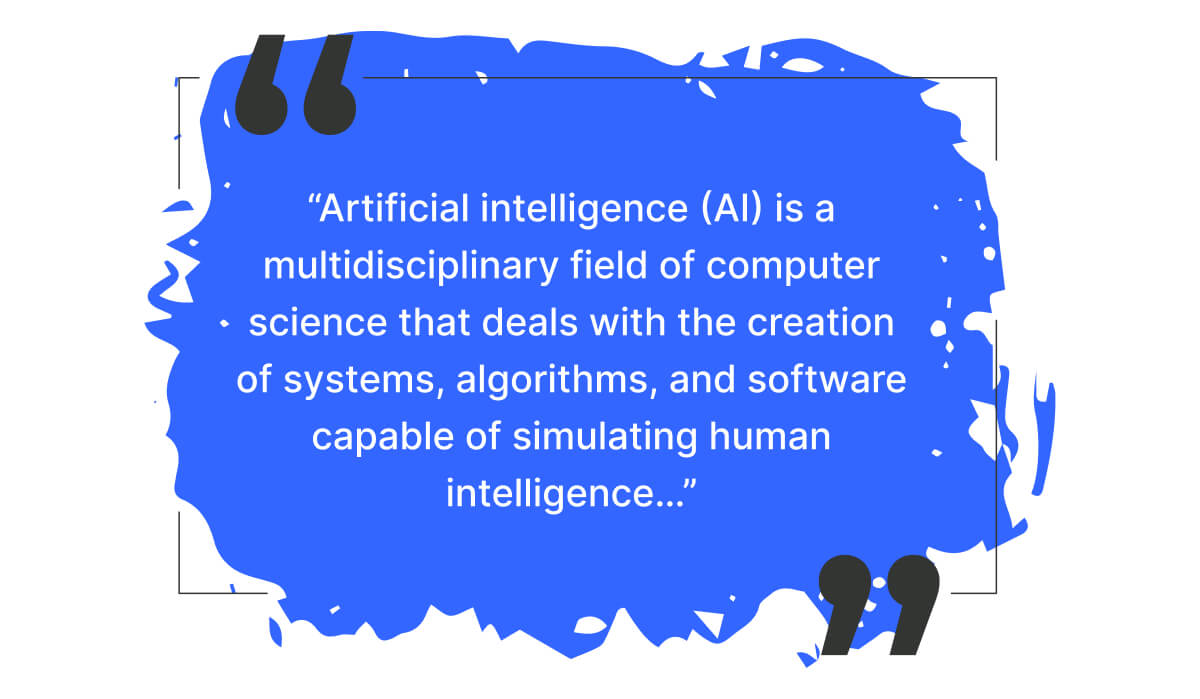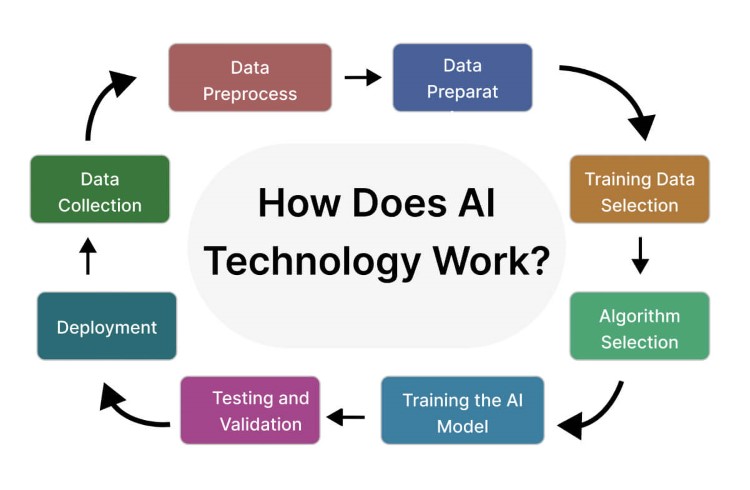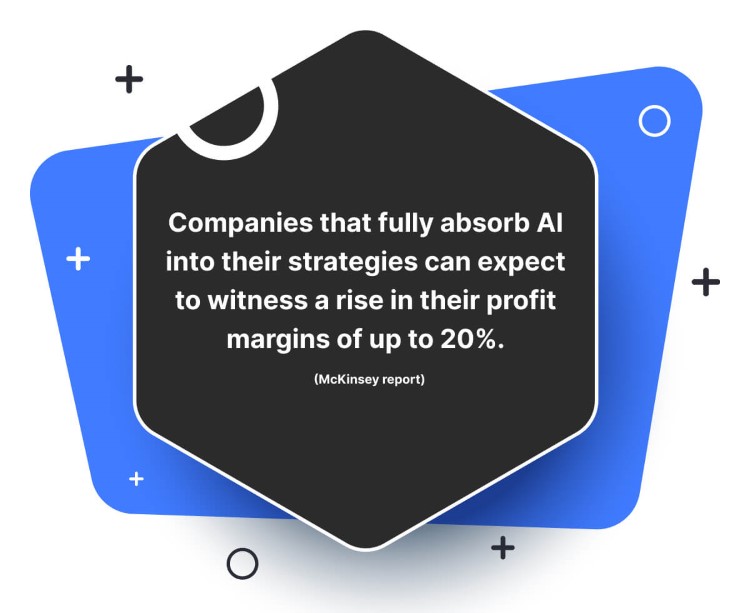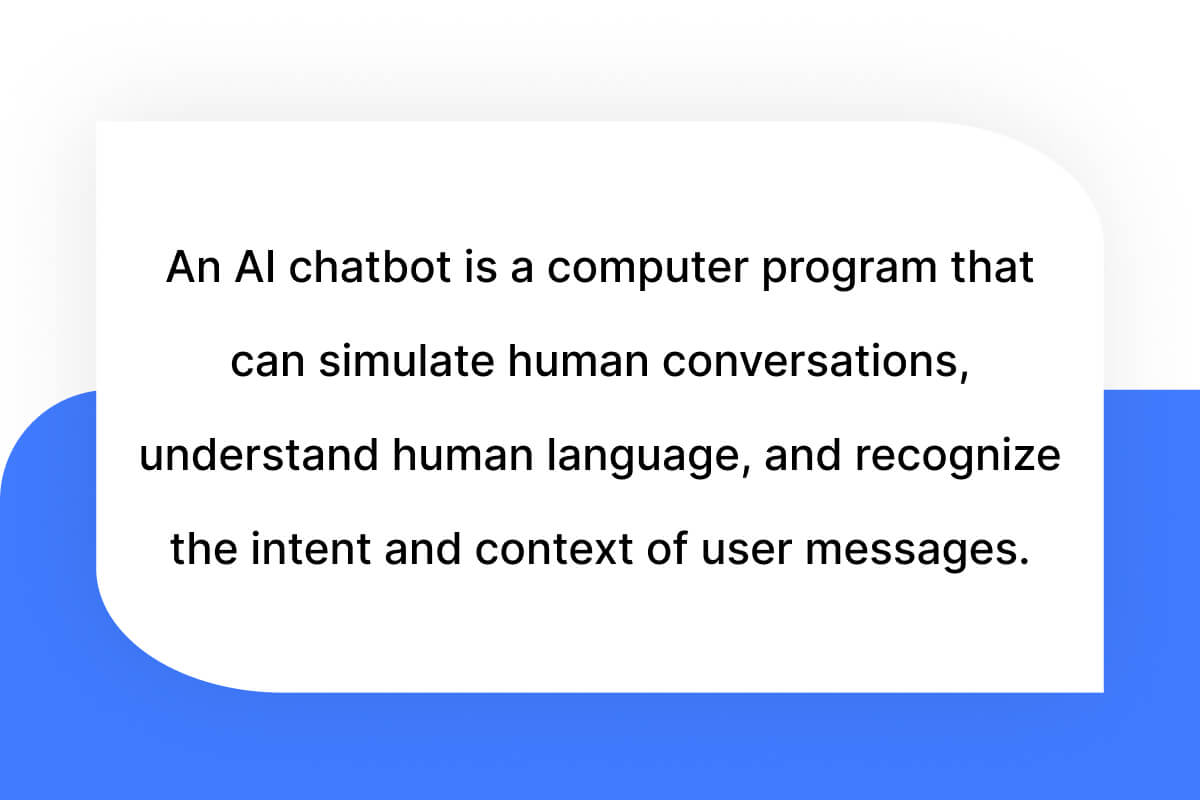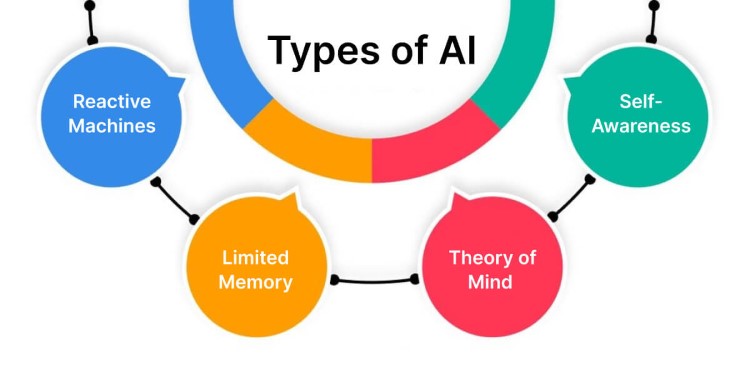Most of us today are very familiar with what is AI. That was not the case two to three decades ago.
In 1996, a game of chess became a watershed moment in the development journey of artificial intelligence technology.
It was no ordinary match – a chess computer was playing against the reigning world champion and perhaps the best-ever chess player in the world in a proper tournament-rule match. IBM’s Deep Blue computer and Russian Grandmaster Gary Kasparov faced off in a highly publicized game of chess.
The match generated intense media coverage as people were curious to know whether a computer could outthink and outsmart humans. They had doubts though as Kasparov had defeated the same computer five years earlier in 1989.
All the doubts were laid to rest that day when the chess computer emerged victorious as unlike five years earlier, it was immensely more powerful through advanced algorithms and computing power.
This event highlighted how machines were capable of outperforming humans in complex cognitive tasks. It also heralded the potential for AI systems to not only challenge but surpass humans in various fields.
Although AI had been a topic of research and development for several decades, Deep Blue’s victory some 27 years ago played a big role in changing the perception of AI in many ways. It marked a turning point for artificial intelligence and led to more interest and more funding in the technology. It would be fair to say that this match accelerated the applications and uses of artificial intelligence technologies across various industries.
Over time, AI has obviously developed into a breakthrough technology that can mimic human abilities by using machines and algorithms. More importantly, the recent advances in machine learning and deep learning have taken AI into the mainstream and made it a vital aspect of our everyday life.
Various industries now leverage the power of artificial intelligence for a variety of tasks that go well beyond just problem-solving. What’s more, the advent of artificial intelligence technology has brought a huge change to the way we work, live, and use technology.
In this blog, we will discuss AI in detail, explore the technology behind it, the tools it drives, the model it runs on, and many more.
But first, let’s get started with understanding what exactly AI is….
What is AI?
Artificial intelligence (AI) is a multidisciplinary field, or wide-ranging branch, of computer science that is concerned with the creation of systems, algorithms, and software capable of simulating human intelligence. The ultimate goal of AI is to contribute to the development of machines that can perform tasks typically requiring human intelligence. The functions of conversational AI can help with various activities, including pattern recognition, problem-solving, reasoning, natural language understanding, and making decisions.
Artificial intelligence is considered the most innovative technology as the systems and software built using it can perform even those tasks associated with human cognitive functions. From playing games to interpreting speech to identifying patterns, artificial intelligence technology can enable all and more. AI systems can also learn without supervision and they can process massive amounts of data and do things on their own.
How Does AI Technology Work?
AI is a powerful piece of technology that can learn from data and make decisions based on the patterns it identifies. It works through a combination of computing power, algorithms, and data, and its workings depend on the type of artificial intelligence and the task it’s designed to perform. The key to AI’s performance lies in its ability to process big amounts of data and do a range of tasks, from natural language understanding to autonomous control.
In general, AI technology relies on various different components to function. Including –
- Data Collection – The success of artificial intelligence systems depends on the data they collect from various sources, including user interactions, sites, databases, and sensors.
- Data Preprocessing – AI systems will need tons of data to learn and this data can either be text, image, audio, or structured numerical data.
- Data Preparation – Software that runs on artificial intelligence needs clean and formatted data to function properly and that’s why the collected data needs to be cleaned, extracted, and transformed to meet the specific application.
- Training Data Selection – AI systems that use deep learning and machine learning models need the labeled or annotated data – split into input features (X) and the target output (Y) – to offer the right outcomes.
- Algorithm Selection – Neural networks, decision trees, and support vector machines are common AI algorithm types that are used based on the nature of the data and problem.
- Training the AI Model – The training data is fed to train the AI model and prepare it to handle queries.
- Testing and Validation – Once the data is fed, the AI model is tested to evaluate its performance and see how well the model adopts new and unseen data.
- Deployment – The AI model will be integrated into devices, apps, and systems once its performance is found satisfactory.
Why is Artificial Intelligence Important?
Artificial intelligence has the potential to change the way we live, work, and perform most of our activities. It’s important because its value spans across industries and domains with the capability to help tackle a range of new-age challenges. Plus, 83% of companies find artificial intelligence a top priority in their business plans.
Here are the many reasons that outline why AI is important –
- AI enables automation and can help us automate repetitive tasks that often require humans. Now when humans are not required for common everyday tasks, it can increase overall productivity and efficiency across industries.
- The key to artificial intelligence’s success is its ability to analyze vast volumes of data quickly and accurately, leading to data-driven decisions by businesses.
- The use of AI systems can contribute to optimizing processes and minimizing operational costs.
- Companies are using AI to add a touch of personalization to the way they serve and engage customers, resulting in enhanced satisfaction.
- Artificial intelligence has revolutionized various industries including banking and healthcare by enabling intelligent tools and systems.
- Using AI-powered elements in chatbots and virtual assistants has made human-computer interaction more natural.
- AI-driven chatbots are now vital to providing 24×7 customer support, answering queries, resolving issues, and all this is boosting customer experience manifold.
- Many industries are using this powerful technology to detect threats, prevent fraud, and tackle the challenges of cybersecurity.
- It has become very valuable for solving complex problems that require analysis of multiple variables and that involve decision-making based on probabilistic outcomes.
What is an AI Chatbot?
An AI chatbot is a computer program that is powered by artificial intelligence technology and can simulate human conversations. These chatbots are advanced as they use natural language processing (NLP) and machine learning techniques to converse and respond to queries in a natural manner. A business can deploy AI chatbot solutions on websites, apps, and messaging platforms to enhance engagement, automate tasks, and answer to everyday queries of users.
Key features of an AI chatbot
- They can understand human language and recognize the intent and context of user message
- They improve their performance over time and learn from interactions with users
- Businesses across industries use AI-powered chatbots for customer service as they can stay available round the clock and interact with users
- Artificial intelligence chatbots can work as virtual assistants and help users perform tasks and access information
Strong AI Vs. Weak AI
Intelligence is never easy to define but experts have categorized artificial intelligence into strong and weak AI. This classification is purely on the basis of the capabilities and limitations that AI possesses or lacks.
Let’s understand both of them in more detail –
Strong AI – This type of AI does not exist, at least till now. If it existed, it would solve even those problems it’s been never trained to work on. It means it could do all that we humans do. Naturally, strong AI ( also known as artificial general intelligence) would do much like a human once it came into force. We have seen its potential in many movies but scientists are not yet able to create a machine with optimum human-like intelligence.
Weak AI – Siri and Alexa are examples of weak AI. All those self-driving cars that are being promoted also run on this AI. Obviously, weak or narrow AI works within a limited context and can do a single task extremely well, but not all tasks. The machines based on this type of artificial intelligence are a simulation of human intelligence and they are not as powerful as strong AI could be.
Types of AI
AI has been categorized based on capabilities and functions. The categorization also considers whether AI can perform defined sets of tasks, think like humans, and exceed human capability. Based on the ability, AI has four main types –
- Reactive Machines – They are the most basic types of artificial intelligence as they can’t store memories and neither can they store past experiences. These machines focus on current scenarios only and can’t rely on past information for future actions.
- Limited Memory – Unlike reactive machines, they are able to store past data or experience for a brief period. They can use stored data for a limited period.
- Theory of Mind – This type of AI machine does not exist but chances are they will be available over time as there is a great improvement in the field of artificial intelligence. If they did, they would understand human emotions and be able to interact like humans do.
- Self-Awareness – It’s a hypothetical concept and is considered the future of artificial intelligence. These machines will be incredibly intelligent, way smarter than the human mind. They will have their own consciousness and self-awareness.
Popular AI Software and Tools for Businesses
The advent of artificial intelligence technologies has opened up immense opportunities for businesses across industries. Today we have tons of AI-powered tools and software that can make business processes more efficient and help improve overall productivity. More importantly, some 8.4 billion AI-powered devices are projected in the world by 2024, which will overtake the total global population.
Here are some of the best artificial intelligence software and tools –
1. Pictory
This AI video generator can help you create and edit high-quality videos without any prior experience in video design or editing. It just needs a script and then the rest gets done quickly. You can see your blog post get converted into an engaging video which you can use for your website or for social media.
2. Murf
Murf is a top AI voice generator that can help you convert text to speech, voice-overs, and dictations. By using this powerful tool, you can easily create high-quality natural-sounding voices and also choose from a variety of voices.
3. Synthesys
This tool is among the best when it comes to enhancing your video content in a quick time. It uses a unique Text-to-Video (TTV) technology to convert scripts into engaging media presentations. It has lip-syncing AI video technology and helps you type a script in one of 140+ available languages.
4. Fireflies
It’s an AI-powered meeting assistant tool that does away the need for note-taking during a meeting. It uses NLP and makes it easy to record meetings across platforms. Using this tool, you can easily transcribe live meetings or audio and make meetings a seamless process.
5. Feathery
This artificial intelligence tool is very helpful as it helps users build highly customizable forms without coding. The advanced form builder it uses can help with a variety of form flows such as signups, onboarding, and more. Plus, its fully flexible 2D visual editor can help create custom layouts and content.
6. Neuraltext
This tool can use the power of artificial intelligence and cover the entire content process, right from ideation to execution. It has a tool for copywriting and key research. Using this tool, you can not only create quality content but also use the data from pages that are already ranking on Google.
Use of AI in Different Fields
AI continues to advance at a rapid rate. This advancement is resulting in innovation in various fields. More organizations have started leveraging the power of artificial intelligence to achieve efficiency and accuracy with operations. All this has opened new possibilities for businesses.
Here are the use cases of artificial intelligence in different fields –
HealthCare
The use of AI technology is growing in the healthcare industry for a variety of purposes and tasks including diagnosis, disease detection, and drug development. AI-powered chatbots and virtual assistants are used to provide patient care, offer medication support, and track and monitor vital signs.
Ecommerce
Ecommerce sites are using AI technology to build recommendation engines to engage better with their customers. These engines are created by using the browsing history data of users, their interests, and preferences. Online stores use chatbots and virtual assistants to improve the user experience and make the conversation as natural as possible.
Banking & Finance Sector
More banks and financial firms are using AI technology to vastly improve the delivery of financial services and boost customer service along the way. AI tools can detect fraud and anomalies in transactions by recognizing patterns. These tools are used for assessing credit scoring and marking customers based on the risk to the business. Sending information, assessing loan risks, and checking insurance coverage viability are some of the other tasks that AI is doing with great ease.
Education
AI can help automate admin tasks to assist educators in a big way. Artificial intelligence has made it possible to do digitization of content and enable rich learning experiences. More students are now accessing learning materials through voice assistants and that is reducing the involvement of teachers. More importantly, AI is being used to monitor students’ data, habits, and study guides, and all this is leading the way for personalized learning.
Marketing
Marketers are leveraging AI to offer highly targeted and personalized ads to the target audience. They are also able to retarget audiences at the right time with the help of behavioral analysis, and pattern recognition. Artificial intelligence can help offer real-time personalization to users and optimize marketing campaigns to match the market’s specific needs. With the assistance of AI ad makers, marketers can effortlessly create and deploy hyper-personalized advertisements. Also, AI video generators are imperative for marketers to create highly engaging and interactive marketing content. These are revolutionizing their ability to engage with the target audience and adapt to market demands in real-time. This technology is also being used to handle routine marketing tasks like campaign reports, management, and much more.
Insurance
Most insurance companies now use AI tools to automate their work and optimize their risk profile. AI predictive analytics can prove very helpful for the industry to filter vast amounts of data and contribute to better decision-making. Insurers rely on AI algorithms to analyze historical data and assess risk more accurately. AI chatbots for insurance are also used a lot to handle routine customer queries and offer 24×7 support on matters related to the industry aspects.
Examples of AI in Our Everyday Life
AI has grown a lot over the years. Today it’s incorporated into different fields and technologies. Most of us already benefit from artificial intelligence but are not aware of it. Given below are some examples of AI that will help you better understand the score of this great technology.
Automation
AI technologies are routinely used by businesses to automate various tasks and processes and achieve efficiency in different ways. The purpose of automation is to perform tasks without human intervention and reduce the need for human labor. Robotic Process Automation (RPA) and Industrial Automation are two examples of AI being used for automation.
Machine Learning
Machine learning is a key component of AI that enables systems to learn from data and improve their performance over time. It helps in the development of modes and algorithms that prepare computers to make decisions without programming. Machine learning has a big role in tasks like image and speech recognition systems, language translation, and sentiment analysis. ML algorithms are used to power recommendation engines and suggest products or content based on user behavior.
Natural Language Processing (NLP)
NLP focuses on the interaction between computers and human language. Using NLP systems computers are able to understand, interpret, and generate human language. Some of the key areas where natural language processing is used include Language Understanding, Language Generation, Speech Recognition, Text Summarization, Language Translation, and Sentiment Analysis. It’s the NLP that is the driving factor behind the way machines interact with humans in a natural manner.
Robotics
Robotics is a field that uses AI to create robots that can do tasks autonomously and interact with their environments. Due to artificial intelligence technology, these robots become more capable and more adaptable to dynamic environments. That’s why these robots can perform tasks that humans find difficult, at least in terms of consistency and frequency.
Enhance Your Business’ Productivity with REVE’s AI Chatbot
At REVE Chat, we understand how customer engagement is the foundation of growth and success for many businesses. So, we bring to you a variety of engagement tools that your business can use to provide great experiences to customers at each step of the way.
Our AI-powered chatbot can help you automate a variety of tasks across sales, support, and marketing. These bots are advanced and enable automation thereby freeing the human workforce for other important tasks.
The chatbot can be added to the live chat software to deliver hybrid support where humans can handle complex queries while bots will handle routine tasks.
Final Thoughts
Artificial intelligence is considered the most influential technology of our time. Its impact is huge, and so is the potential for your business.
With REVE Chat, you can benefit from the power of artificial intelligence and help take your business to the next level.
You can sign up with us and check how our AI tools can help your businesses in many different ways.

